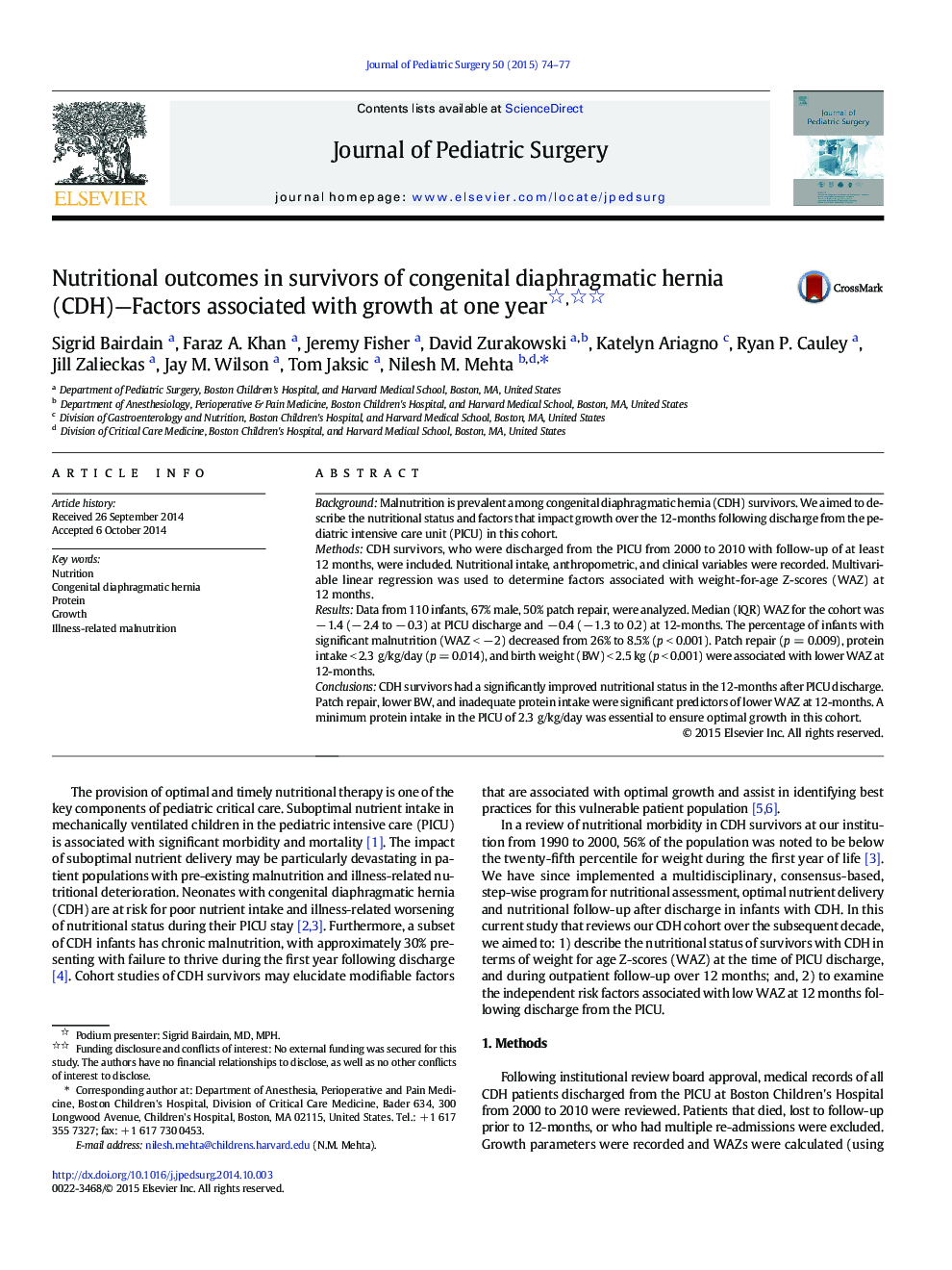| Article ID | Journal | Published Year | Pages | File Type |
|---|---|---|---|---|
| 4155204 | Journal of Pediatric Surgery | 2015 | 4 Pages |
BackgroundMalnutrition is prevalent among congenital diaphragmatic hernia (CDH) survivors. We aimed to describe the nutritional status and factors that impact growth over the 12-months following discharge from the pediatric intensive care unit (PICU) in this cohort.MethodsCDH survivors, who were discharged from the PICU from 2000 to 2010 with follow-up of at least 12 months, were included. Nutritional intake, anthropometric, and clinical variables were recorded. Multivariable linear regression was used to determine factors associated with weight-for-age Z-scores (WAZ) at 12 months.ResultsData from 110 infants, 67% male, 50% patch repair, were analyzed. Median (IQR) WAZ for the cohort was − 1.4 (− 2.4 to − 0.3) at PICU discharge and − 0.4 (− 1.3 to 0.2) at 12-months. The percentage of infants with significant malnutrition (WAZ < − 2) decreased from 26% to 8.5% (p < 0.001). Patch repair (p = 0.009), protein intake < 2.3 g/kg/day (p = 0.014), and birth weight (BW) < 2.5 kg (p < 0.001) were associated with lower WAZ at 12-months.ConclusionsCDH survivors had a significantly improved nutritional status in the 12-months after PICU discharge. Patch repair, lower BW, and inadequate protein intake were significant predictors of lower WAZ at 12-months. A minimum protein intake in the PICU of 2.3 g/kg/day was essential to ensure optimal growth in this cohort.
